Nitecore Intellicharger new i4 2017
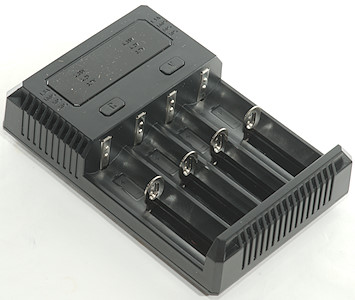
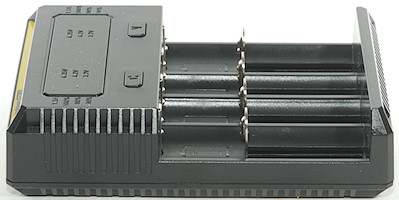
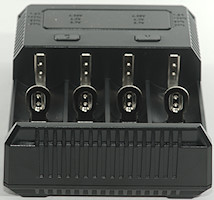
This is Nitecores "simple" charger in the 4 slot version.


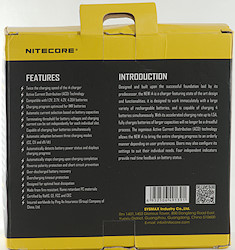

The cardboard box lists lot of specifications, battery types and features.
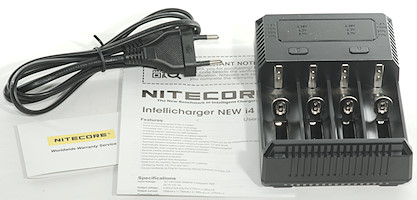
The box contains the charger, a mains cable, manual and a warranty card.
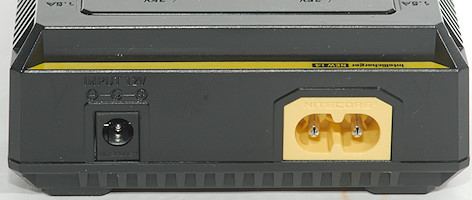
The charger has two power connectors, one for mains input (100-250VAC 50/60Hz) and one for 9-12 VDC input.
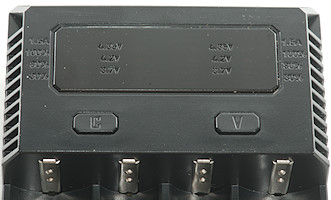
The user interface has buttons and the leds are place behind a dark cover.

It has 3 green status leds and a red led to signal full current (1.5A). The status led also has a secondary function, they are used as indicators for selected voltage.
The charger is a bit special with current selection, usual it will select current depending on battery length and chemistry, but it can be overridden in one case: Two long LiIon batteries can be charged at 1.5A, but then they will be charged in sequence, not simultaneously.
To change voltage or current tap the C button until a single green led above the required slot lights up. Then hold C or V button to adjust current or voltage. C button can only turn the red led on, the V button will change between the 3 green leds for the 3 different LiIon charge voltages. Press again shortly on C or wait for timeout.
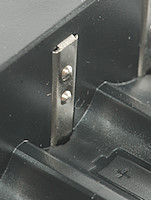

The slots uses the usual construction and works well. They can handle batteries from 28mm to 70mm long.
Notice the long bar at the plus end, due to this the charger can handle anything up to D or 32xxx size.


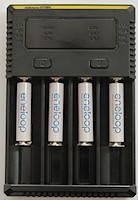
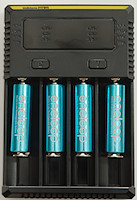
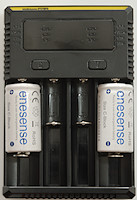
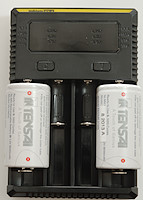
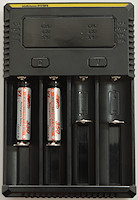
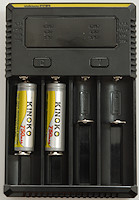

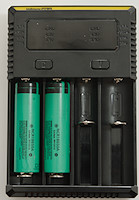
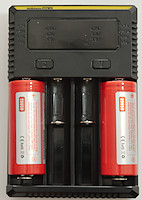
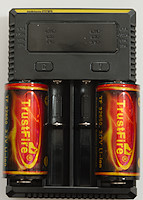
The charger can handle 70 mm long batteries, inclusive flat top cells.
Measurements
- Power consumption when idle is 0.56 watt
- Will charge a LiIon with 0.2mA when charging is finished.
- Will discharge a NiMH with 0.1mA when not powered
- Will discharge a LiIon with 0.9mA when not powered
- Change between long/short cell at around 56mm
- Below 0.8V the charger will report error (All leds flashing) and charge with about 1mA.
- Above 0.8V regular charging is used.
- Will assume LiIon above 2.0V
- Slot 1 & 3 will time share.
- Slot 2 & 4 will time share.
- Charger will not restart if battery voltage drops.
- Power cycling and insertion of a battery will restart charging.
4.2V LiIon charging
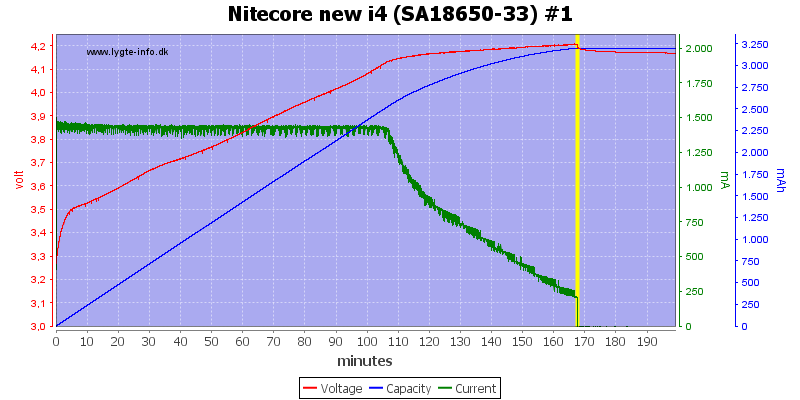
This is a nice CC/CV charge curve, the termination is slightly high at 200mA.

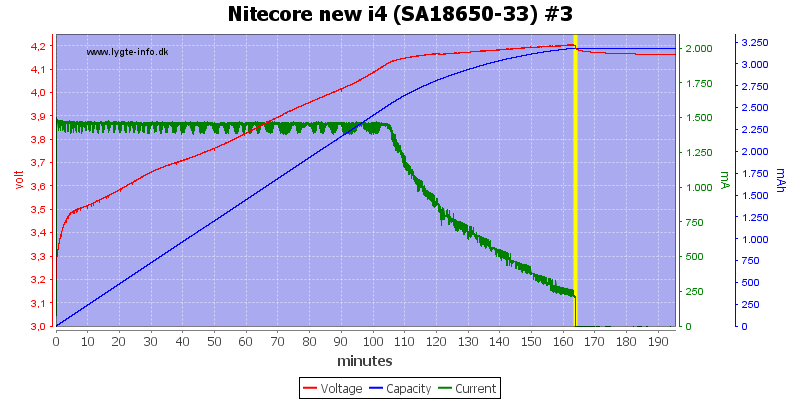

The other 3 slots looks similar.

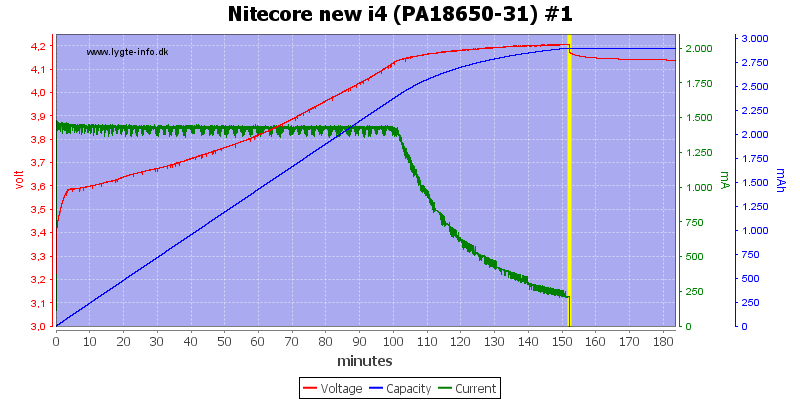
The two other batteries also charges fine.
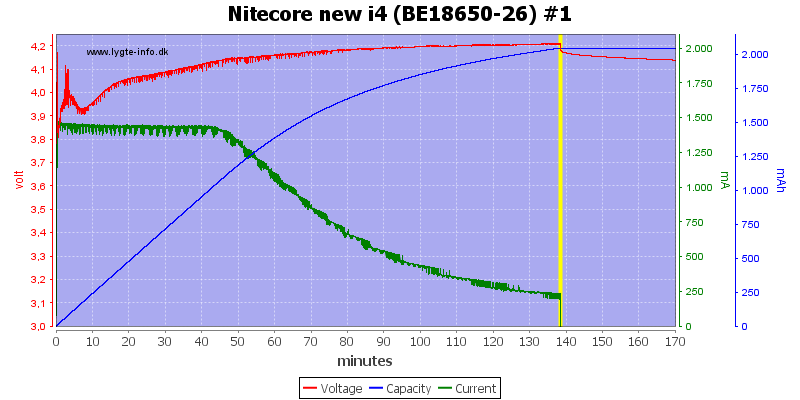
The old battery has more voltage drop when finished.

With a smaller cell the current is automatically reduced to 0.5A, but the termination current stays the same.
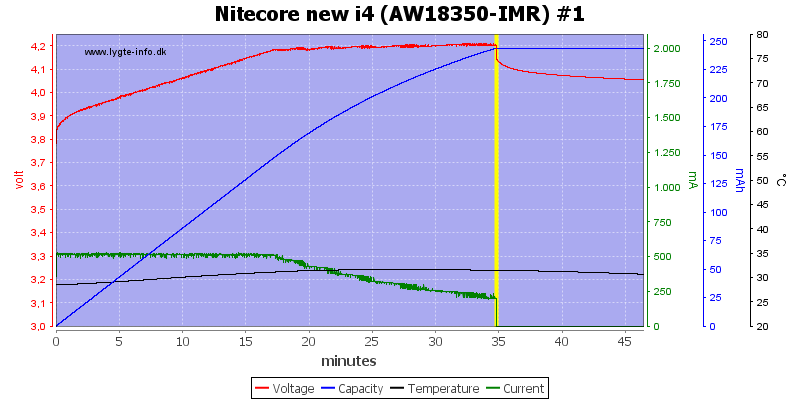
The charger has no problem with this old cell, but due to the high termination current the voltage will drop significantly when current is turned off.
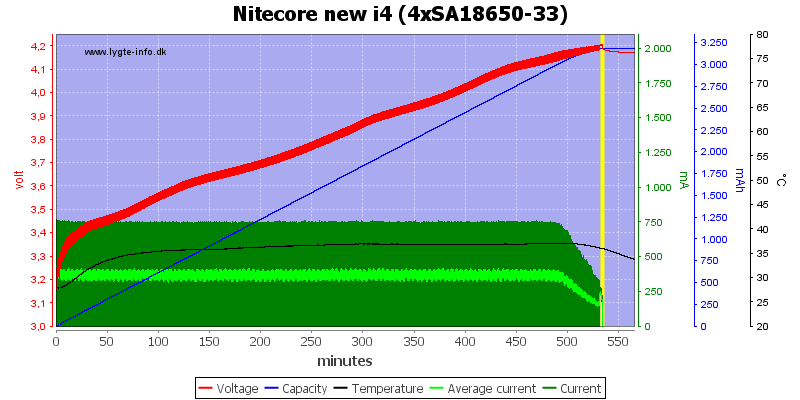
With 4 batteries the charge current is fairly low.
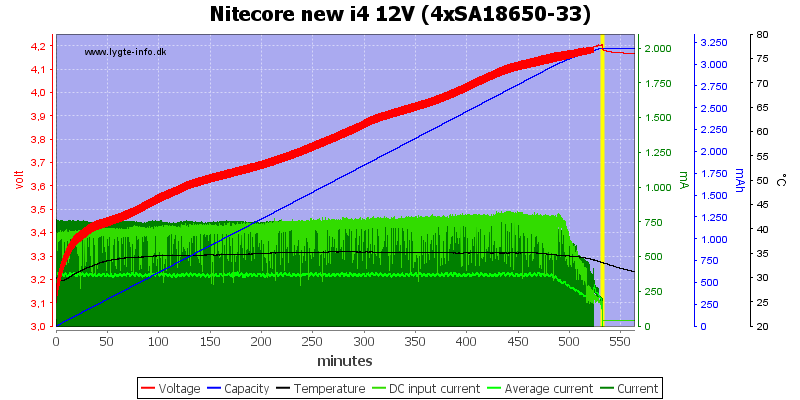
And it need abou 0.8A from 12V
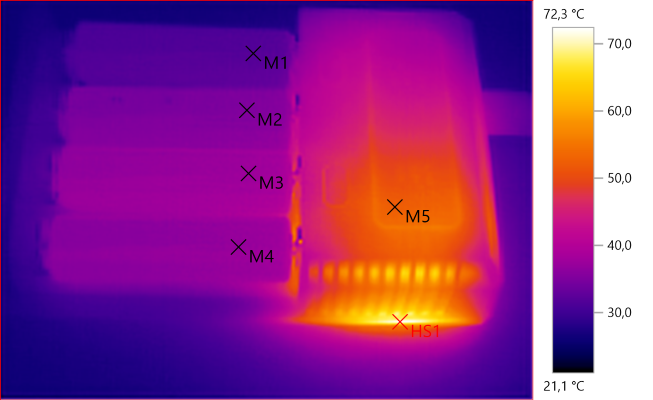
M1: 32,0°C, M2: 35,3°C, M3: 37,7°C, M4: 36,9°C, M5: 52,3°C, HS1: 72,3°C
The hot part is probably the internal power supply.
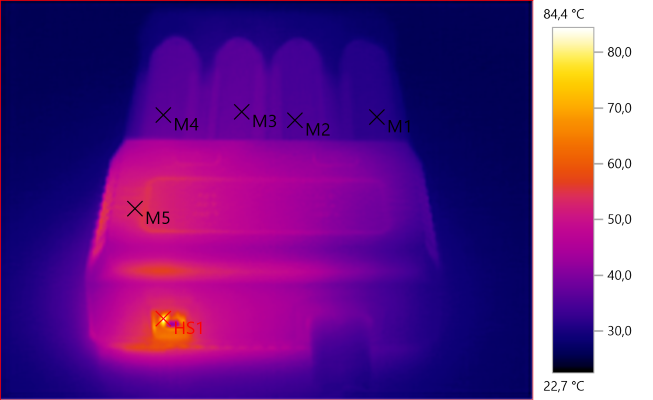
M1: 31,6°C, M2: 35,0°C, M3: 37,3°C, M4: 36,7°C, M5: 53,5°C, HS1: 84,4°C
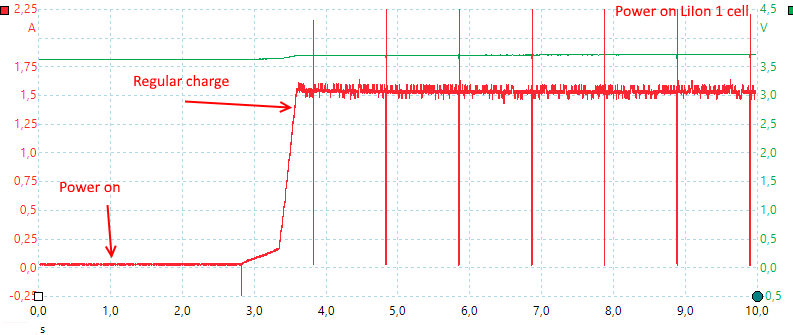
The charger starts very fast. It turns current off to measure voltage.
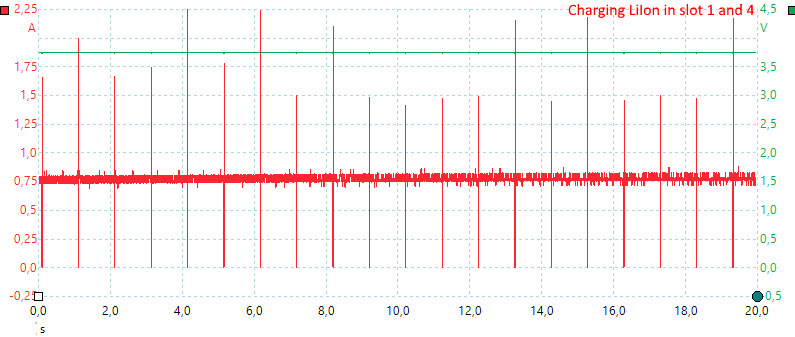
With batteries in slot 1 & 4 it will only charge with half current, i.e. 0.75A
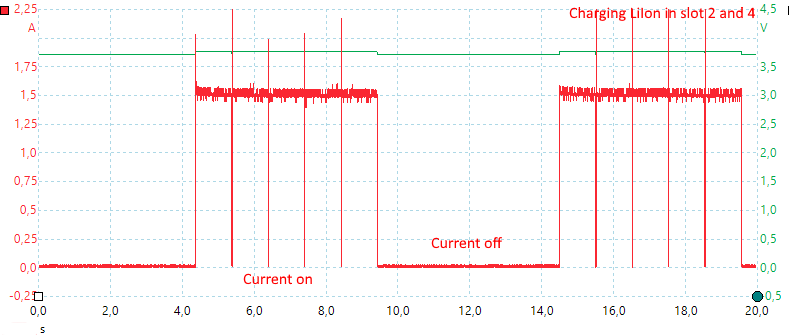
If I put batteries in slot 2 & 4 the current is also half, this time due to time sharing.
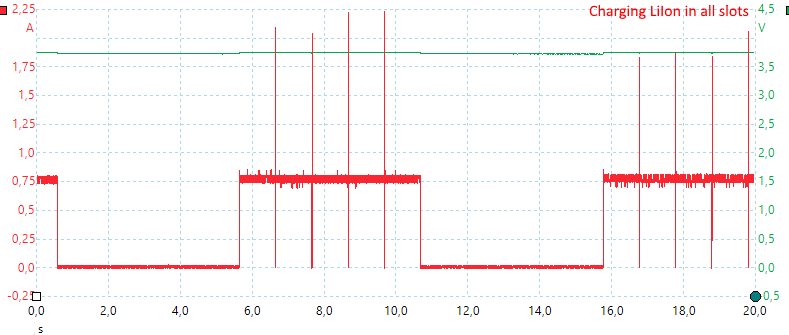
With 3 or 4 batteries it will both reduce current and time share.
3.6V LiIon charging (LiFePO4)
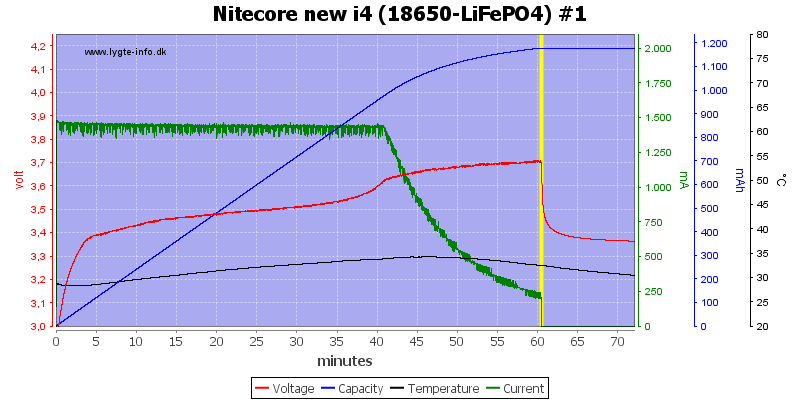
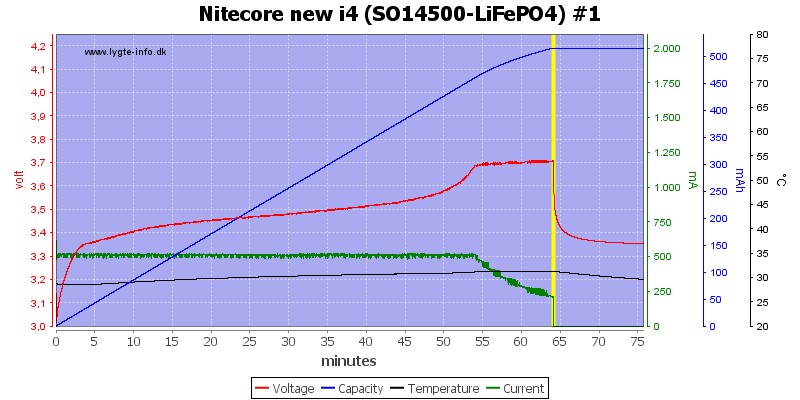
The charger handles LiFePO4 batteries correctly.
4.35V LiIon charging
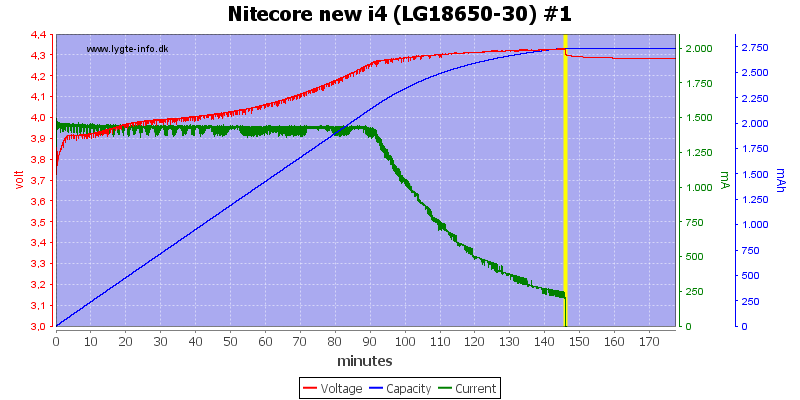
The 4.35V charging looks fine.
NiMH charging

With NiMH the charger current is only 0.5A for any size battery. The charging uses voltage termination without any top-off charge. I cannot see any temperature raise at the end of charge, i.e. the battery is slightly undercharged.
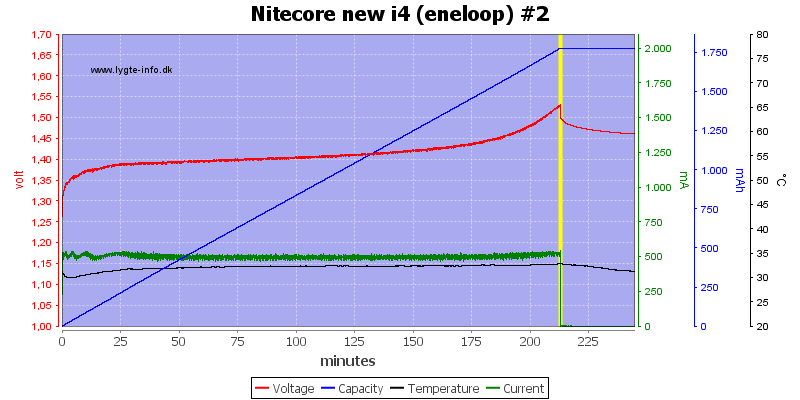
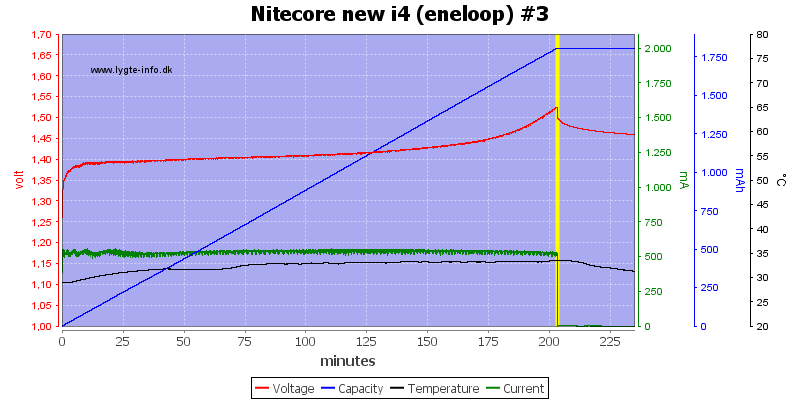
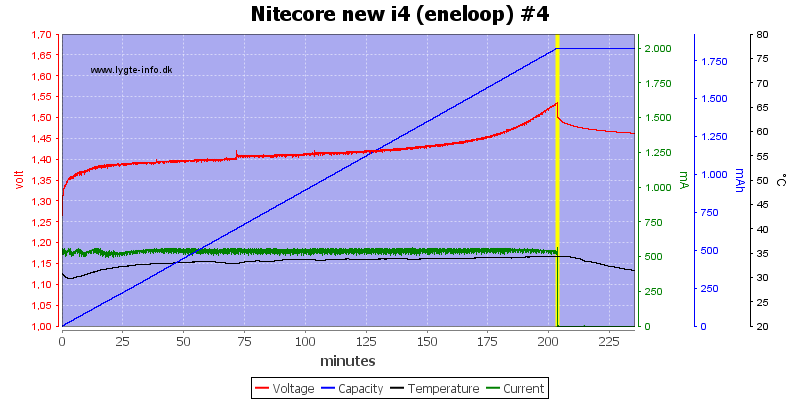
The 3 other slots works the same way.
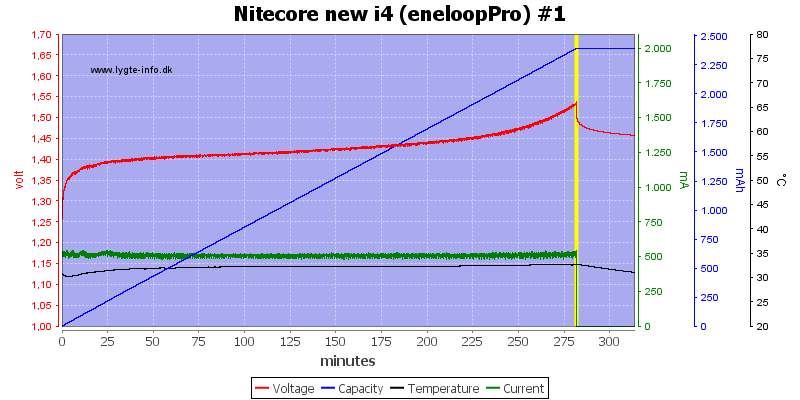
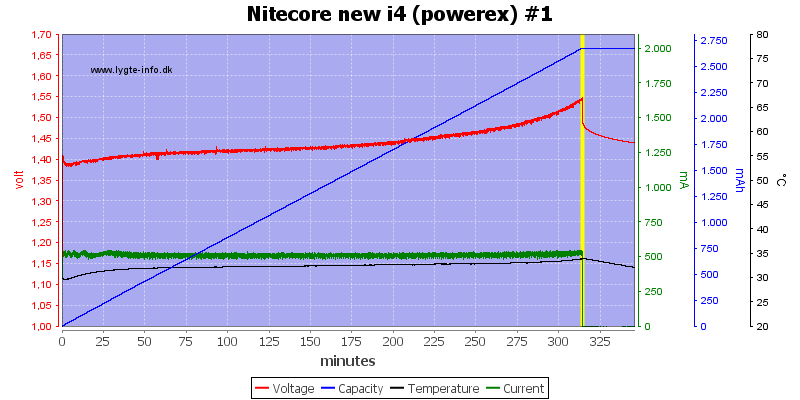
Same with the two high capacity batteries.
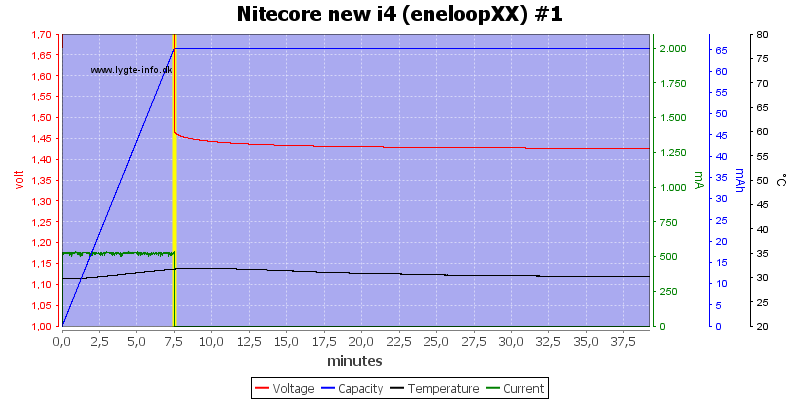
This worn down cell got 7.5 minutes before the charger realized that it was hopeless and terminated.
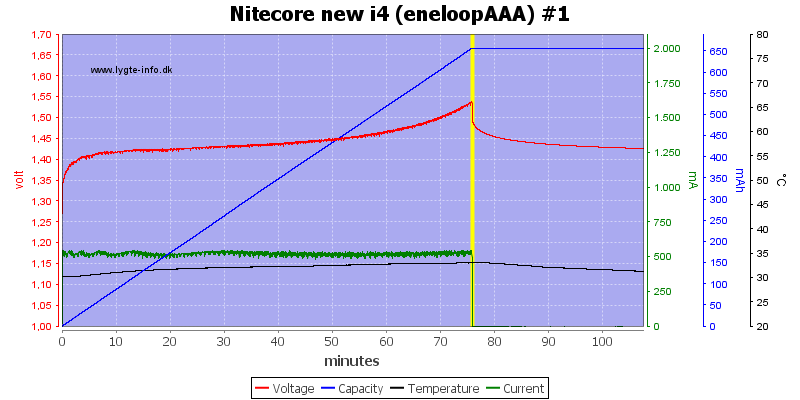
The AAA cell is charged the same way.

The full cell was detected in about 6 minutes.
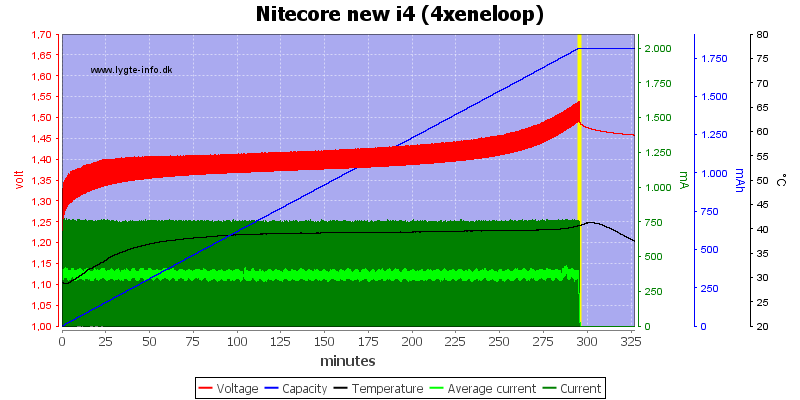
With 4 batteries the charger current is about 0.375A, this time at least one battery gets warm (i.e. it is full).
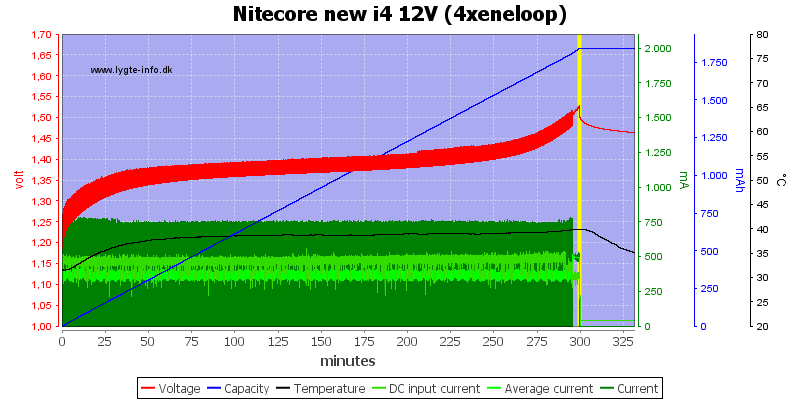
The charger needs about 0.5A from 12V for charging four NiMH.
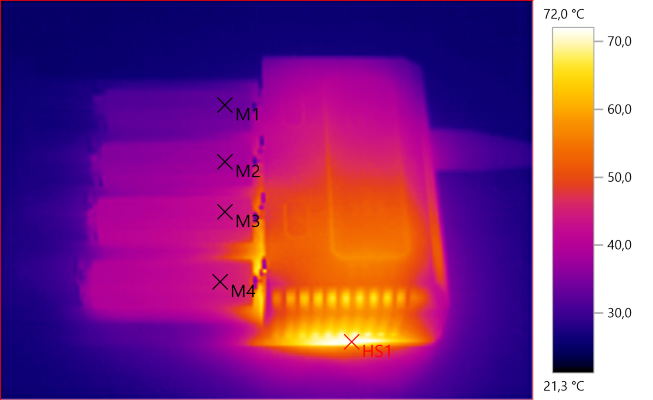
M1: 33,2°C, M2: 38,0°C, M3: 43,3°C, M4: 43,9°C, HS1: 72,0°C
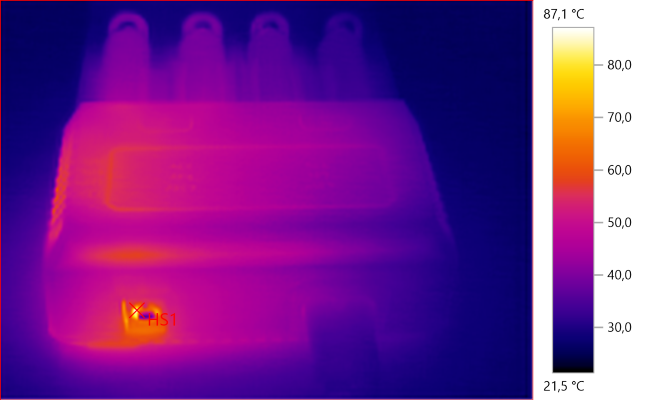
HS187,1°C
Some electronic inside the charger gets fairly warm.
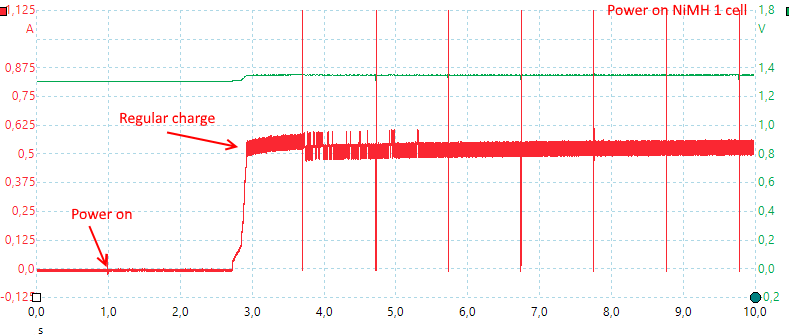
The charger is also fast to start with NiMH batteries.
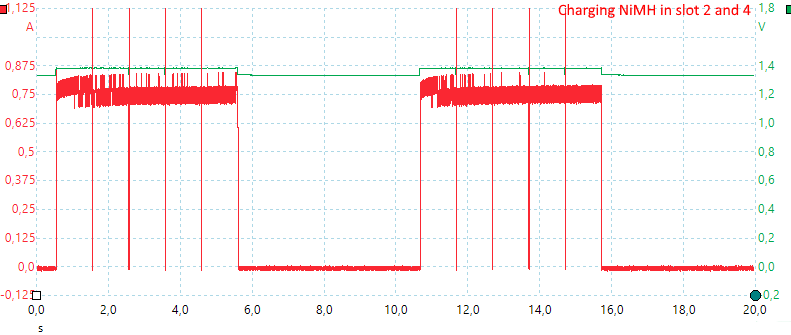
With batteries in slot 2 & 4 the charger increased the current to 0.75A and starts time sharing.
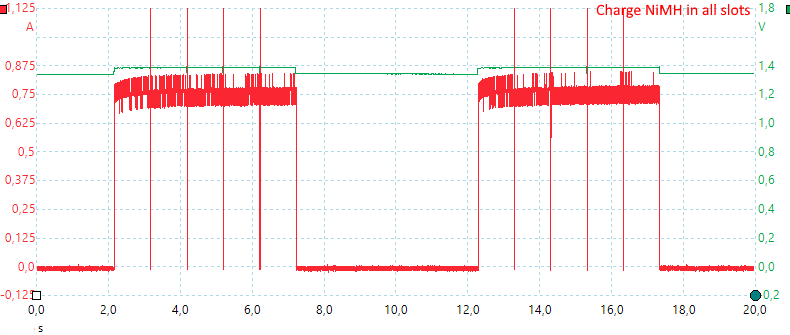
The charger do not reduce charge current with more batteries, 4 batteries use the same time sharing as two.
Testing with 2830 volt and 4242 volt between mains and low volt side, did not show any safety problems.
Conclusion
The charger is simple to use with the automatic current selection and chemistry selection: just put batteries in and they are charged.
But it is not a fast charger, a single 18650 can be charged in about 3 hours (This is fairly standard), but with four cell it will take 9 hours.
Charging LiFePO4 or 4.35V batteries is a bit more tricky due to the not very user friendly user interface, but it is possible.
I will call it a good family charger, everybody can use it for NiMH and 4.2V LiIon batteries.
Notes
The charger was supplied by a zapals.com for review.
Here is an explanation on how I did the above charge curves: How do I test a charger




























































